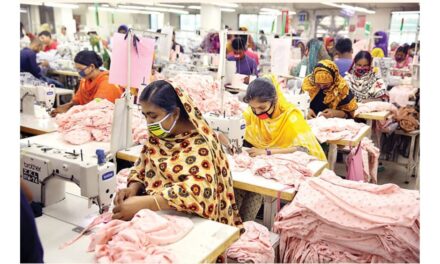 China’s coronavirus outbreak would affect Indian exporters and importers of readymade garments, cotton yarn, fibres and fabric, with both pros and cons. As the outbreak has done away with the Chinese option for garment importers, mainly in the West, Indian exporters can now target these markets. However, growing yarn exports to China would be badly affected.
China’s coronavirus outbreak would affect Indian exporters and importers of readymade garments, cotton yarn, fibres and fabric, with both pros and cons. As the outbreak has done away with the Chinese option for garment importers, mainly in the West, Indian exporters can now target these markets. However, growing yarn exports to China would be badly affected.
With several businesses said to be affected in China due to the coronavirus, the Indian textile and apparel sector should seize the opportunity in global trade, T Rajkumar, Chairman of the Confederation of Indian Textile Industry, said recently in Coimbatore.
If China doesn’t produce for 30 days, he said, its main clients in Vietnam, Cambodia, Thailand, South Korea and the European Union could possibly turn to India for buying finished goods, clothing and fabrics, according to a report. With India’s textile exports falling in the past couple of years, this surge would help the industry become buoyant, he added.
Chinese buyers generally begin their annual sourcing from Indian exporters in January every year and that has not happened this year. The Southern India Mills’ Association (SIMA) feels India’s exports of cotton, viscose, polyester yarn and fibre to China will be hit.
According to the Cotton Textile Export Promotion Council (TEXPROCIL), India exports 90 mn kg of yarn a month and China alone imports 30 per cent from India every month.
European buyers, who normally begin negotiating with the garment exporters of India, Bangladesh and Indonesia for their annual requirements in January at Hong Kong, have cancelled their visit due to the outbreak there as well, said the Tirupur Exporters’ Association (TEA). The exporters have been asked to trade through videoconferencing, and many exporters in India find it difficult to bargain for a better price of their products through that mode, a TEA spokesperson said.
Indian readymade garment exporters also import over `1,000 cr worth accessories like buttons, metal buttons, zips, hangers and needles from China as these are nearly 40 per cent cheaper. Though these exporters don’t see any immediate impact, but if the outbreak continues for some time, they need to look at an alternate sourcing of these accessories, which in turn may increase the finished goods cost by 3-5 per cent, according to TEA.
With China further extending its Lunar Year holidays for a week or 10 days, the trade negotiations between China traders and Indian exporters is expected to be further delayed, SIMA feels.
According to the Cotton Association of India, there is no panic now as far as cotton exports to China are concerned.





















